Humans of NCEI: Lauren Carroll
NCEI News Feed
http://www.ncei.noaa.gov/news/humans-ncei-lauren-carroll
NCEI News Feed
http://www.ncei.noaa.gov/news/humans-ncei-lauren-carroll
2020 was a record year for visitors at Sleeping Bear Dunes National Lakeshore. But this year hasn't kept up.
The post Sleeping Bear Dunes visitation down for July and August first appeared on Great Lakes Echo.Great Lakes Echo
http://greatlakesecho.org/2021/09/27/sleeping-bear-dunes-visitation-down-for-july-and-august/
Great Lakes Echo is one of 23 newsrooms in a climate collaborative representing both long-standing and emerging media groups.
The post New project promises to amplify reach of Great Lakes climate reporting first appeared on Great Lakes Echo.Great Lakes Echo
http://greatlakesecho.org/2021/09/27/new-project-promises-to-amplify-reach-of-great-lakes-climate-reporting/
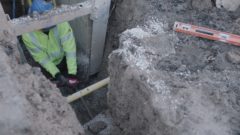
BENTON HARBOR, Mich. (AP) — The state of Michigan will provide bottled water and water filters in Benton Harbor, where tests have revealed elevated levels of lead, a spokesman said Wednesday.
The action comes less than two weeks after about 20 groups urged the Biden administration to immediately step in.
Great Lakes Now
https://www.greatlakesnow.org/2021/09/ap-michigan-sending-water-filters-to-benton-harbor-due-to-lead/
THIS WEEK: Fall Project Grants Due September 30! + Minnesota Fines Oil Company $3 Million After Violation + A Cost-Effective Approach to Removing Heavy Metals from Drinking Water + Canadian Voters Elect a Minority Liberal Government (Again) + Water is Life Festival, Wins Grassroots Environmentalist of the Year
The Freshwater Future Fall Grant cycle deadline is approaching quickly. Check out Freshwater Future’s 2021 grant opportunities guidelines to see if your organization is eligible. For examples of past successful projects, check out our grant map. If you would like to apply and time is not on your side, contact us before September 30 to discuss how we may best assist you.
In January, a Canadian oil company violated its pipeline construction permit by digging too deeply and hitting a groundwater aquifer that released millions of gallons of water into rare and sensitive wetlands. The company didn’t report the violation until June, six months after. The Minnesota Department of Natural Resources ordered over $3 million in fines and is requiring restoration of wetlands. A failure to report is reminiscent of this company’s response to a broken pipeline that leaked nearly one million gallons of oil into the Kalamazoo River in Michigan, one of the biggest oil spills in the U.S.
Scientists at Massachusetts Institute of Technology have been developing technology that could be much more efficient and cost effective in removing lead from drinking water at the residential level as well as industrial. The new approach uses energy shockwaves to detect and separate lead without having to remove the things that make drinking water healthy. The next step is to try it in a commercial setting. If successful, it could prove useful in helping communities with lead service lines temporarily and cost- effectively protect public health.
Canadians went to the polls on September 20 for a federal election. The governing Liberals called an election in August in the hopes of receiving a majority mandate, but the vote resulted in an almost identical status to the pre-election government. First Nations and environmental organizations worked diligently to ensure that there was national attention on issues such access to clean drinking water and climate change. The Liberal platform continues its commitment to ensuring that all First Nations communities have access to safe and clean drinking water. Although previous commitments have fallen short in terms of timing and actions, the broader Protecting Nature agenda includes a commitment to establish a 10-year, $1 billion Freshwater Protection Plan to protect and restore large lake and river systems, including the Great Lakes. On-going pressure to keep these commitments will be essential.
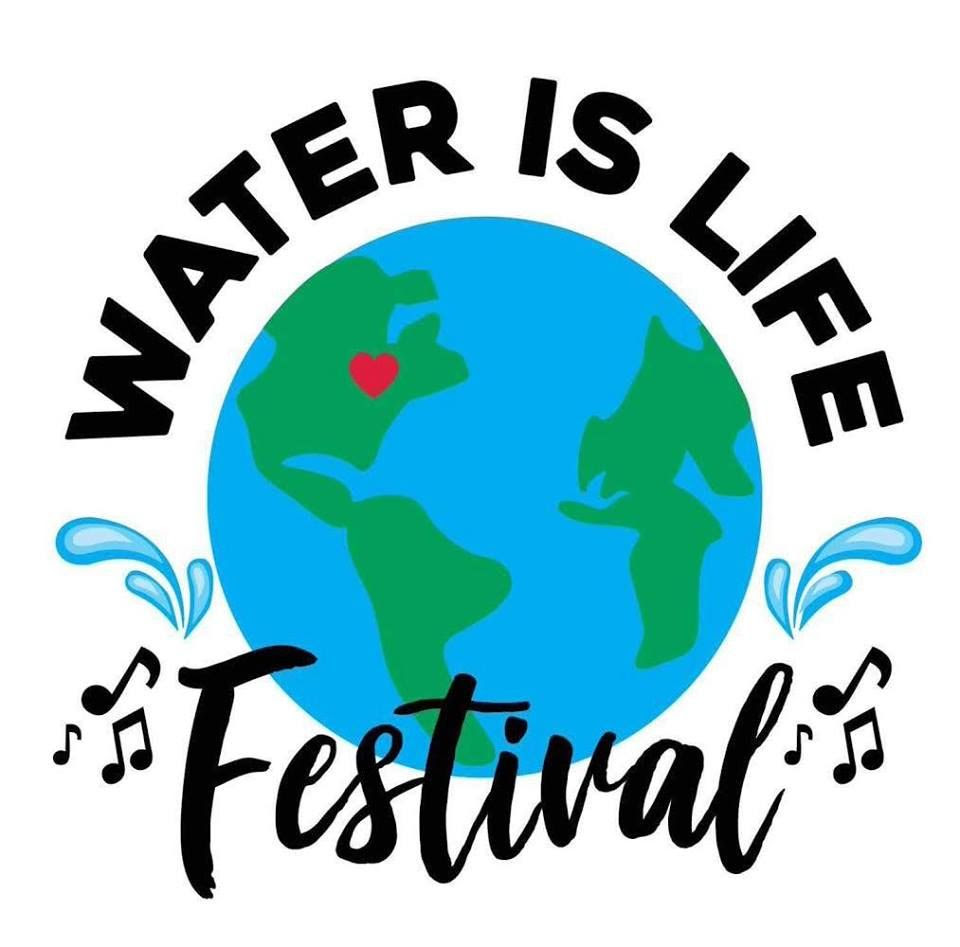
The Water is Life Festival was recognized as Grassroots Environmentalist of the Year by the Northern Michigan Environmental Action Council. Freshwater Future would like to congratulate all the candidates for their hard work to protect our water and natural resources, and special congratulations to Jannan Cornstalk and the entire Water is Life Festival team for their ongoing efforts!
Blog – Freshwater Future
https://freshwaterfuture.org/freshwater-weekly/freshwater-future-weekly-september-24-2021/
The U.S. Environmental Protection Agency awarded a $309,300 grant to the city of Erie, Pennsylvania, to keep litter and trash out of Presque Isle Bay and Lake Erie provided by the Trash-Free Waters Grant under the Great Lakes Restoration Initiative. Read the full story by WZTE-FM – UNION CITY, PA.
Great Lakes Commission
https://www.glc.org/dailynews/20210924-epa
The Lake Superior Watershed Partnership and Land Conservancy, a nonprofit group based in Marquette, Michigan, received $122,000 from the National Oceanic and Atmospheric Administration this year to remove marine debris from Upper Peninsula beaches and harbors. Read the full story by MLive.
Great Lakes Commission
https://www.glc.org/dailynews/20210924-noaa-grant
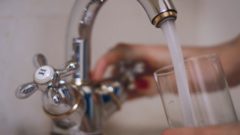
Drinking water systems in small and more diverse communities nationwide are less likely to receive state funding through the Environmental Protection Agency’s Drinking Water State Revolving Fund, according to a recent report.
Through the fund, the EPA awards grants to each state and the states add a 20% match, according to the agency.
Great Lakes Now
https://www.greatlakesnow.org/2021/09/report-disparities-drinking-water-fund-distribution-inequity/
Crystal M.C. Davis, vice president of the Alliance for the Great Lakes, is being recognized for her efforts to ensure fair and equitable access to water. Read the full story by WKSU-FM – Kent, OH.
Great Lakes Commission
https://www.glc.org/dailynews/20210924-cleveland
This year at least six algae blooms were reported on the western arm of Lake Superior, according to the Wisconsin Department of Natural Resources. The blooms of cyanobacteria, also known as blue-green algae, are likely increasing in the lake due to warm surface water and ample sunlight. Read the full story by The Star Tribune.
Great Lakes Commission
https://www.glc.org/dailynews/20210924-algae-bloom
During the Mackinac Policy Conference on Wednesday, Gov. Gretchen Whitmer and other officials offered up the Lake Michigan Electric Vehicle Circuit, a plan to add charging stations all along the shoreline. Read the full story by the Detroit Free Press.
Great Lakes Commission
https://www.glc.org/dailynews/20210924-ev
Waterspouts, an atmospheric phenomenon that resembles a tornado-like column of swirling air on water, were formed on Lake Michigan Wednesday amid gusty winds and high, damaging waves, according to multiple reports on social media. Read the full story by WMAQ-TV – Chicago, IL.
Great Lakes Commission
https://www.glc.org/dailynews/20210924-water-spout
The 2021-22 state budget passed this week by the Michigan Legislature includes $25 million for a pilot program in the western Lake Erie basin to increase the participation of agricultural lands using best management practices for water quality. Read the full story by the Daily Telegram.
Great Lakes Commission
https://www.glc.org/dailynews/20210924-michigan-budget
The state of Michigan will provide bottled water and water filters in Benton Harbor, where tests have revealed elevated levels of lead, a spokesman said Wednesday. Read the full story by The Detroit News.
Great Lakes Commission
https://www.glc.org/dailynews/20210924-lead
Partners for Clean Streams, which focuses on improving quality of life along Toledo-area waterways, is reaching a milestone this Saturday with its 25th annual Clean Your Streams Day. Read the full story by The Blade.
Great Lakes Commission
https://www.glc.org/dailynews/20210924-cleanup
A fledgling initiative created in part by the Chicago-based Conference of Great Lakes St. Lawrence Governors & Premiers has attracted nearly $4 billion in sustainability investments for the region in 19 months. Read the full story by The Blade.
Great Lakes Commission
https://www.glc.org/dailynews/20210924-sustainability-investment
On September 21, 2021, the Great Lakes St. Lawrence Governors and Premiers announced a series of actions and resolutions as part of their virtual bi-annual meeting.
The following joint statement was issued in response by: Alliance for the Great Lakes, Audubon Great Lakes, Black Environmental Leaders Association, Drink Local Drink Tap, Flint Community Water Lab, Freshwater Future, Junction Coalition, Michigan Environmental Council, The Midwest Environmental Justice Network, Milwaukee Water Commons, National Wildlife Federation, The Nature Conservancy in Ohio, Ohio Environmental Council Action Fund, Village of Healing Cleveland, We the People of Detroit.
September 23, 2021 — The Great Lakes region is facing a water infrastructure crisis. We have not invested in the maintenance of our drinking, waste, and stormwater systems. This is evidenced by lead pipes that poison drinking water, ongoing sewage contamination that closes beaches, and broken water mains that cave in streets. The U.S. Environmental Protection Agency estimates that it will cost $188 billion over 20 years to upgrade the drinking and wastewater infrastructure in the Great Lakes states of Illinois, Indiana, Michigan, Minnesota, New York, Ohio, Pennsylvania, and Wisconsin. Ohio and Illinois have the unfortunate distinction of ranking #1 and #2 in the nation, respectively, for the number of lead service lines in their states. And The American Society of Civil Engineers gave our nation’s drinking water system a “C-” grade this year, reflecting the fact that much of our drinking water infrastructure is nearing the end of its useful life.
In light of this, we the undersigned organizations are disappointed that the recent announcement from the Great Lakes St. Lawrence Governors and Premiers heralding regional priorities to protect the environment and boost the economy failed to take unified action to address a water infrastructure crisis that is impacting millions of people. While the announcement contains very important environmental agreements, such as commitments to protect the lakes from invasive carp and justly transition the region toward clean energy, the omission of water justice and infrastructure action is glaring.
The governors and premiers missed a major opportunity to speak as a region for the drinking water, health, and well-being of all who live in the Great Lakes states. While investing in these infrastructure needs is undeniably expensive, kicking the can down the road does not make sense. The longer we delay, the worse the economic, environmental, and public health impacts will be for the region, taxpayers, and communities that are disproportionately affected by gaps in public spending. We encourage the governors and premiers to discuss collective commitments and actions that will position the region to lead in solving water infrastructure issues.
###
Media contact: Jennifer Caddick, jcaddick@greatlakes.org
The post Groups: Great Lakes Governors and Premiers miss opportunity on water infrastructure appeared first on Alliance for the Great Lakes.
News – Alliance for the Great Lakes
News – Alliance for the Great Lakes
https://greatlakes.org/2021/09/groups-great-lakes-governors-and-premiers-miss-opportunity-on-water-infrastructure/
It’s hard to believe that 30 years ago in September, volunteers joined our first Adopt-a-Beach events on Lake Michigan. Today the program reaches across all 5 lakes and all 8 Great Lakes states. On Saturday, September 18th, thousands of dedicated volunteers took to the beaches with one goal in mind: To keep the Great Lakes healthy, beautiful, and free from plastic pollution.
Each year, roughly 85% of the litter collected at beach cleanups is made up of plastic. Adopt-a-Beach volunteers are on the front lines of keeping plastic out of our lakes. Tackling litter and plastic pollution in the Great Lakes is no small task, but together we are able to make a difference.
Our September Adopt-a-Beach event is part of the International Coastal Cleanup. We are still compiling beach cleanup data, but in the meantime, take a look at a few memorable moments shared by volunteers, highlighting cleanup events around the region.
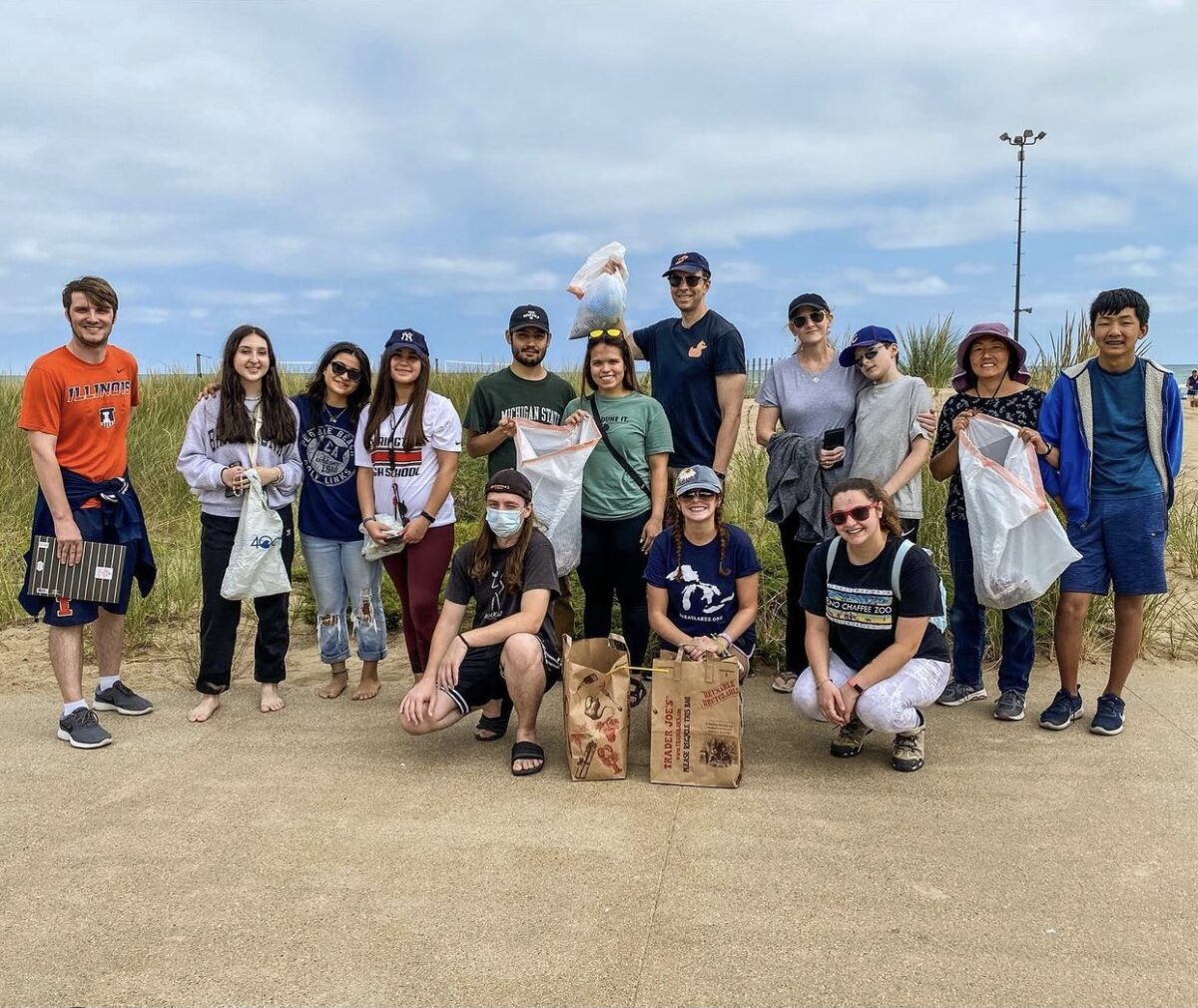
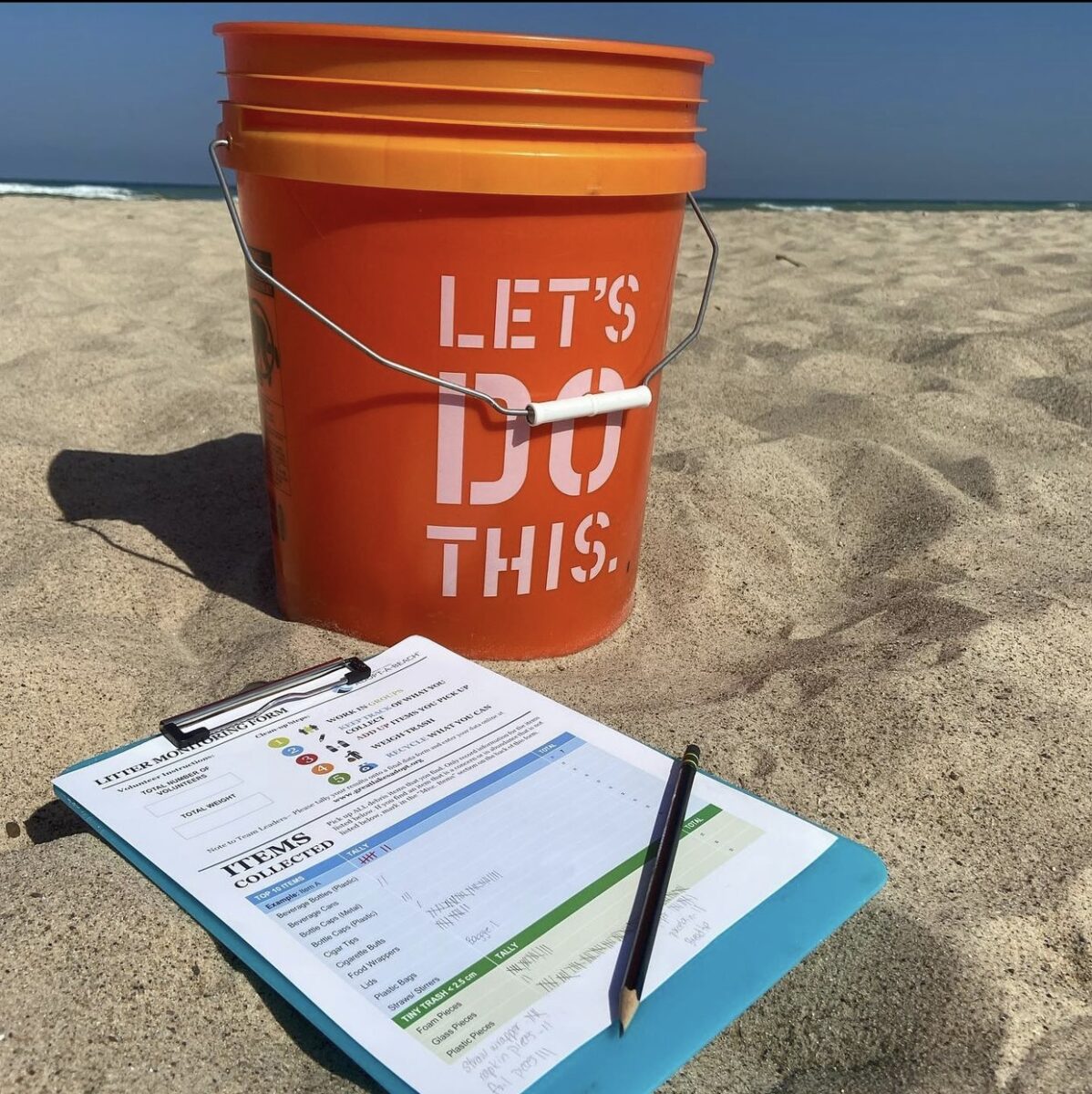
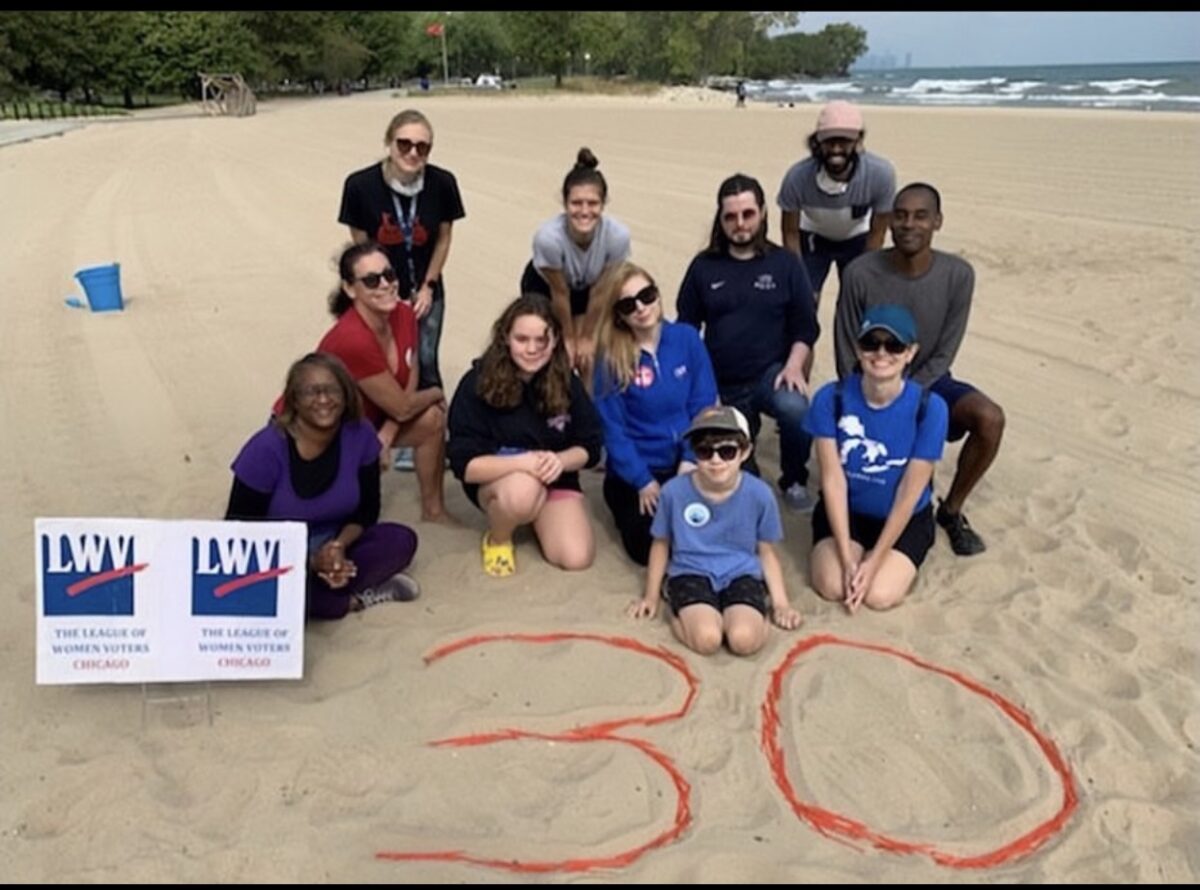
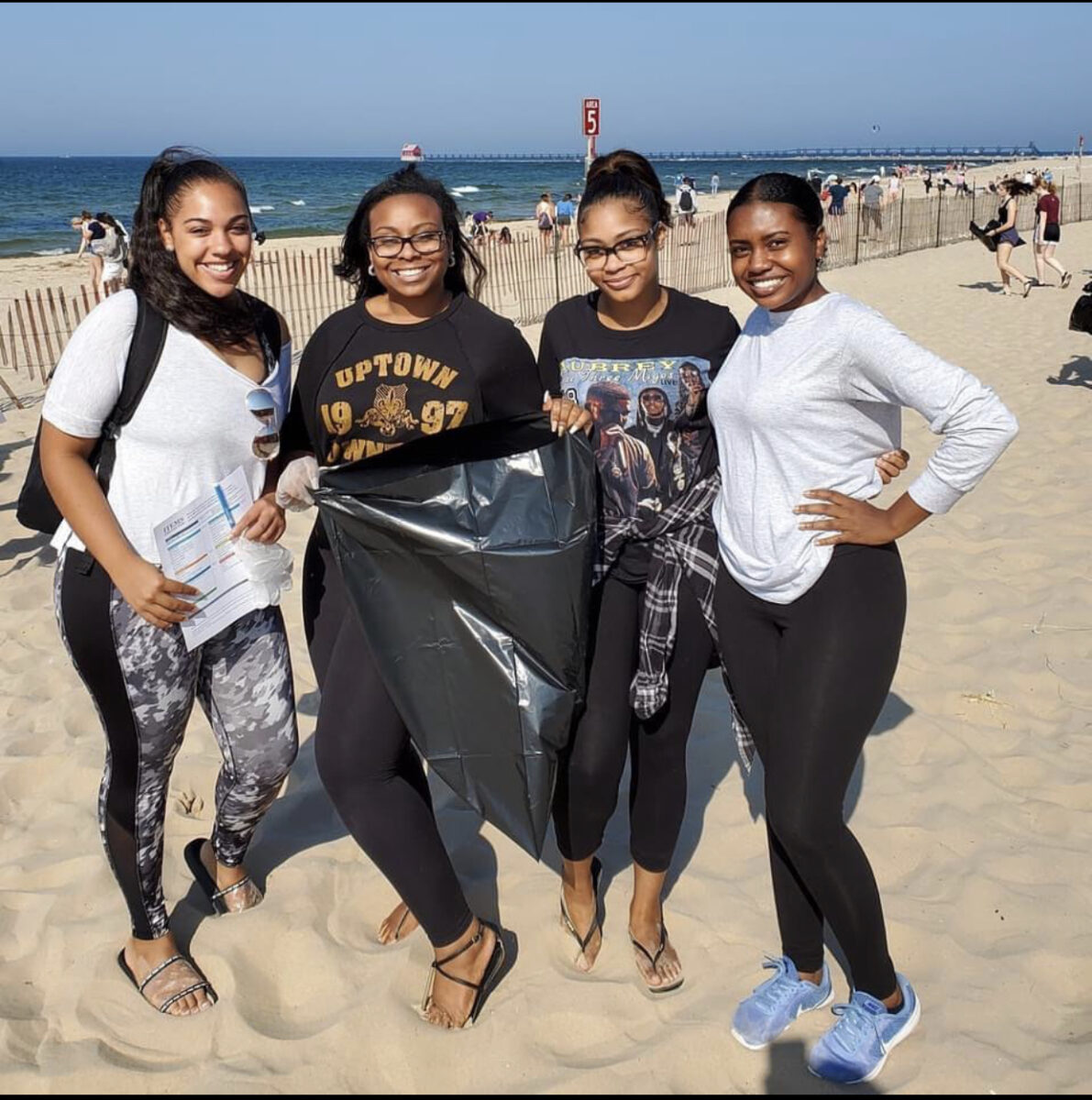
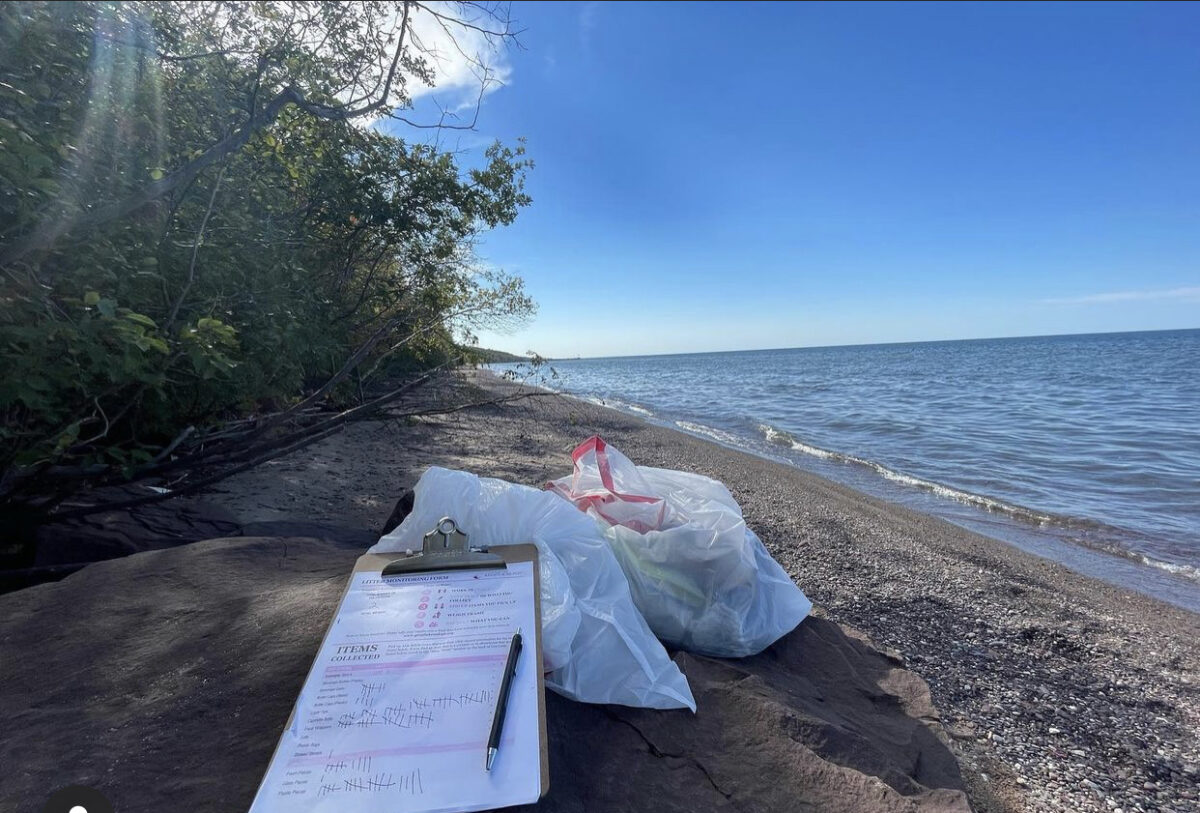
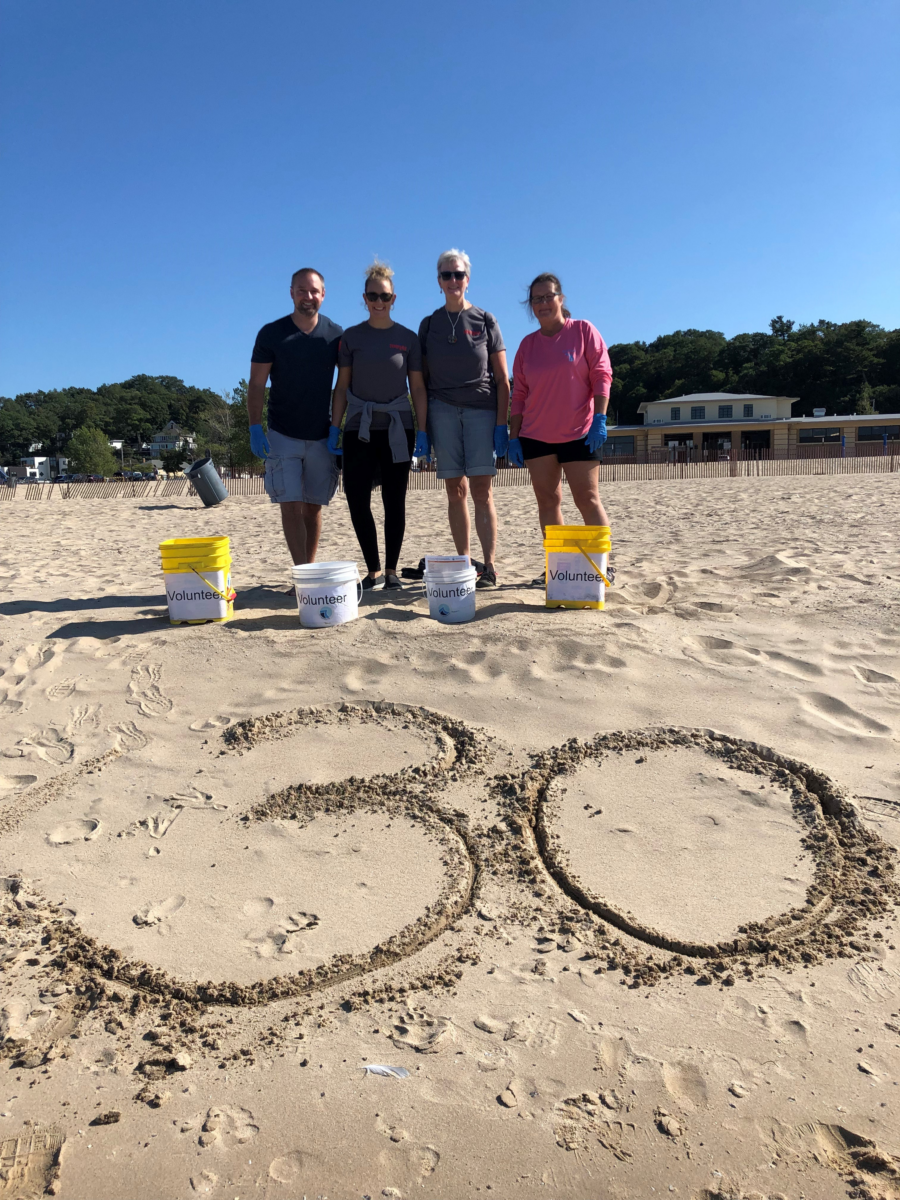
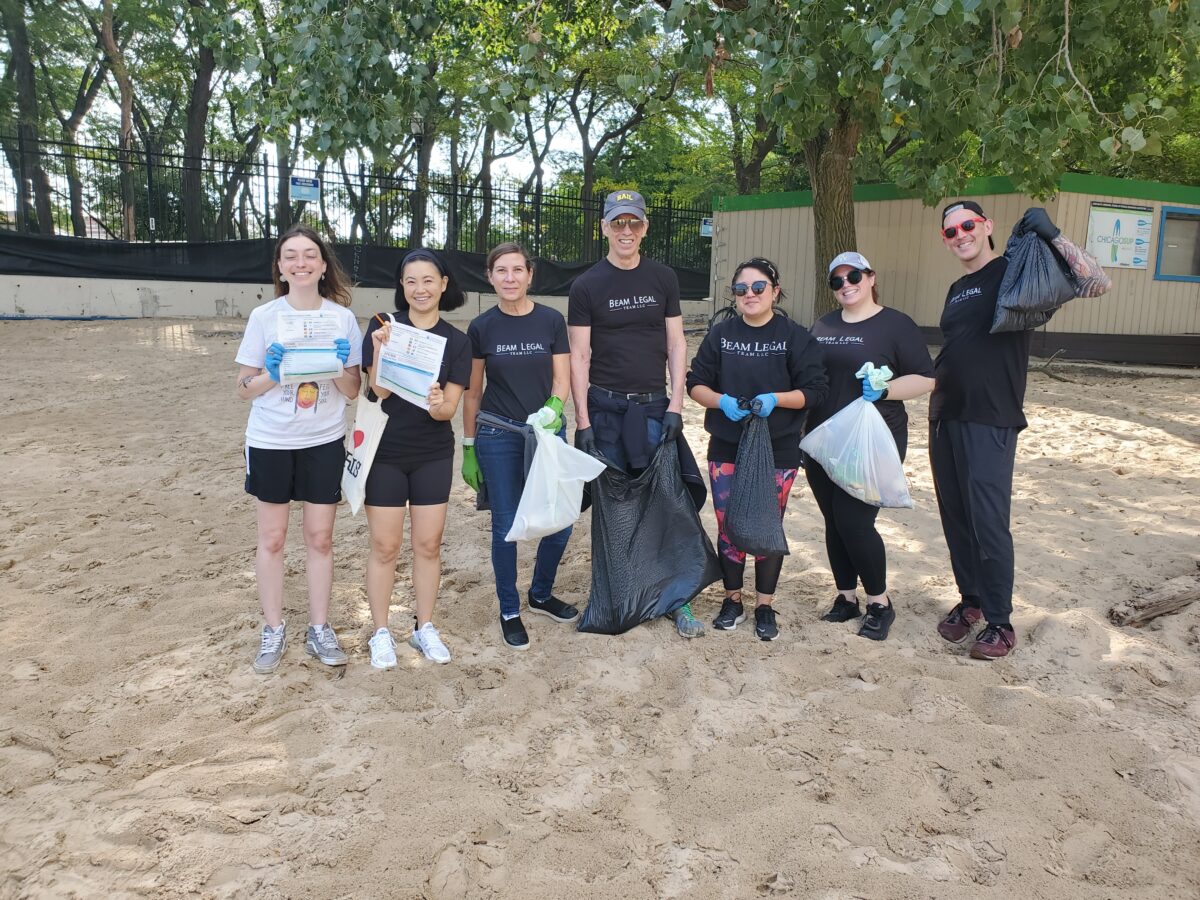
The post 30th Anniversary of September Adopt-a-Beach a Success! appeared first on Alliance for the Great Lakes.
News – Alliance for the Great Lakes
News – Alliance for the Great Lakes
https://greatlakes.org/2021/09/30th-anniversary-of-september-adopt-a-beach-a-success/
When Flint Rising, the Environmental Transformation Movement of Flint, and the St. Francis Prayer Center contacted Great Lakes Environmental Law Center (GLELC) and Earthjustice attorneys with concerns about Ajax Materials’ plan to build an asphalt plant in Flint, Michigan, it immediately raised significant alarms. The city has been an epicenter of environmental injustices for decades, the most recent of which captured attention of people across the world after thousands of residents were exposed to toxic drinking water.
Recognizing the cumulative impacts of the current environmental risks posed to the community, along with the undeniable disparate impacts of the proposed plant on a low-income community of color, GLELC and Earthjustice attorneys submitted a comment on behalf of their clients that urges Michigan’s Department of Environment, Great Lakes, and Energy (EGLE) to deny the permit.
If granted, the permit would authorize air pollution from a hot mixed asphalt plant at 5088 Energy Drive without any cumulative impact analysis. Of the 2,970 people living within 1-mile of the proposed plant, 86% of the population identify as people of color, including 77% of the population identifying as Black and 10% of the population identifying as Hispanic. Forty-three percent of households have incomes of less than $15,000 a year. The area’s per capita income in 2018 was $14,991.18.
EGLE’s failure to utilize its power to conduct a cumulative effects analysis perpetuates a long history of societal disenfranchisement, disinvestment, and disregard for communities of color. The confluence of environmental and social impacts, when combined, must trigger this heightened level of scrutiny applied to permit decisions for facilities near these large historically marginalized communities.
The comment can be viewed in its entirety below.
News - Great Lakes Environmental Law Center
News - Great Lakes Environmental Law Center
https://www.glelc.org/our-blog/2021/9/23/supporting-call-by-impacted-flint-residents-glelc-and-earthjustice-submit-comment-urging-asphalt-plant-air-permit-denial
You searched for flood - The Press
You searched for flood - The Press
https://gopresstimes.com/2021/09/23/community-partners-launch-flooding-survey/
Fish and Wildlife Service News
Fish and Wildlife Service News
http://www.fws.gov/news/ShowNews.cfm?ref=%0Aus-fish-and-wildlife-service-announces-final-recovery-plan-for-the-&_ID=37002
Proposed state regulation of sand and gravel mining would wrest control from local authorities and could lead to a similar loss of authority over other issues, according to local and environmental officials.
The post Push for state regulation of sand and gravel mining draws opposition in Michigan first appeared on Great Lakes Echo.Great Lakes Echo
http://greatlakesecho.org/2021/09/23/push-for-state-regulation-of-sand-and-gravel-mining-draws-opposition-in-michigan/
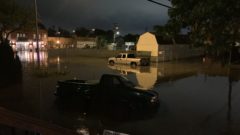
By Corey Williams, Associated Press
WEST BLOOMFIELD, Mich. (AP) — Between an inch and 4 inches of rain fell on the Detroit area as of Wednesday morning during the latest batch of wet weather to roll through parts of Michigan and other Midwestern states.
The long duration of the storm, however, allowed rainfall runoff to enter storm drains, rivers and streams more slowly starting Tuesday afternoon, which helped the area avoid levels of flooding that submerged thousands of basements, dozens of streets and even freeways this summer.
Great Lakes Now
https://www.greatlakesnow.org/2021/09/ap-long-duration-storm-rain-detroit-area/

By Steve Karnowski, Associated Press
Six Native American tribes sued Wisconsin on Tuesday to try to stop its planned gray wolf hunt in November, asserting that the hunt violates their treaty rights and endangers an animal they consider sacred.
The Chippewa tribes say treaties give them rights to half of the wolf quota in territory they ceded to the United States in the mid-1800s.
Great Lakes Now
https://www.greatlakesnow.org/2021/09/ap-6-tribes-sue-wisconsin-november-wolf-hunt/
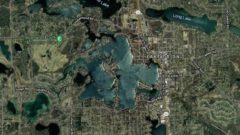
LAKE ORION, Mich. (AP) — A virus is being blamed on the deaths of between 300 and 600 mostly adult common carp this summer in a Detroit-area lake.
An investigation has confirmed that the koi herpesvirus caused the fish kill in Lake Orion, Michigan’s Department of Natural Resources said Friday.
Great Lakes Now
https://www.greatlakesnow.org/2021/09/ap-dnr-virus-deaths-common-carp-detroit-area-lake/
Methylmercury uptake rate in phytoplankton is among the highest recorded
Sept. 22, 2021
By Moira Harrington
A recently published study in the journal of the American Chemical Society, Environmental Science and Technology, found that while Great Lakes waters harbor low methylmercury concentrations, the rates of methylmercury transfer to phytoplankton are extremely high, higher than rates observed in open oceans. Phytoplankton are the smallest organisms in an aquatic food web.
Researchers, including a UW-Madison-supported postdoctoral scientist, say this is important because the bioaccumulation of methylmercury into phytoplankton sets the baseline for methylmercury levels in fish.
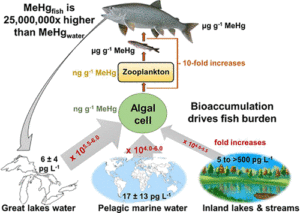
Methylmercury is highly toxic and is the form most encountered by people. This is generally through eating fish and shellfish, which is why advisory consumption guidelines are issued, particularly targeted toward pregnant women and young children. However, monitoring fish and shellfish varieties—some have higher levels of methylmercury—and consumption frequency, people can still enjoy the health benefits of omega-3 fatty acids found in the food.
From 2010 to 2018, the U.S. Geological Survey Mercury Research Lab in Madison, Wisconsin, teamed up with the U.S. EPA and its research vessel the Lake Guardian to monitor inorganic and methylmercury dynamics in the five Great Lakes. This was done through a combination of vertically, seasonally and spatially comprehensive water quality measurements and analysis of seston collections, which is the suspended particle mass in the lakes made up of plankton, bacteria, bugs and detritus.
Ryan Lepak, a postdoctoral scientist (Ph.D. UW-Madison, 2018) through the University of Wisconsin Water Resources Institute and its sister organization, Sea Grant and stationed at the U.S. EPA Mid-Continent Ecology Division in Duluth, Minnesota, said, “Ultimately, the study concluded the very low concentrations of dissolved organic carbon, the substrate which competes with phytoplankton for methylmercury but also can serve as a source of sustenance, in these lakes likely create a scenario where methylmercury transfer to phytoplankton is facilitated. The planktonic methylmercury levels are quite low, but exceedingly higher than we’d expect considering the extremely low methylmercury levels in the waters in which they reside.”
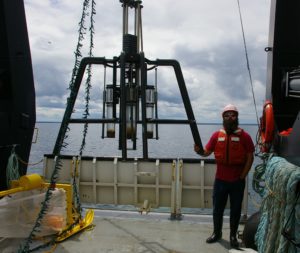
Lepak continued by explaining the transfer of methylmercury up the lower food web, from phytoplankton to herbivorous zooplankton and then to omnivorous zooplankton, was not statistically different. Finally, he and the team tested whether water-mercury concentrations have declined over the study period and determined that without more routine continuous monitoring, trends could not be identified because unresolved sources of variability masked data trends.
“The conditions that make the Great Lakes highly susceptible to methylmercury bioaccumulation are common to the world’s great lakes,” Lepak said. “These global water bodies should serve as excellent sentinels to track the impacts mercury reductions at local, regional and global scales have on biota. This paper’s important finding could aid those planning global mercury monitoring networks aimed at tracking mercury reductions due to actions resulting from the Minamata Convention on Mercury, a multilateral environmental agreement the U.S. signed in 2013 and which would reduce global mercury pollution.”
The post Methylmercury water concentrations low, but Great Lakes fish consumption advisories persist—new research documents one probable culprit first appeared on WRI.
News Release | WRI
https://www.wri.wisc.edu/news/methylmercury-water-concentrations-low-but-great-lakes-fish-consumption-advisories-persist-new-research-documents-one-probable-culprit/
Methylmercury uptake rate in phytoplankton is among the highest recorded
A recently published study in the journal of the American Chemical Society, Environmental Science and Technology, found that while Great Lakes waters harbor low methylmercury concentrations, the rates of methylmercury transfer to phytoplankton are extremely high, higher than rates observed in open oceans. Phytoplankton are the smallest organisms in an aquatic food web.
Researchers, including a UW-Madison-supported postdoctoral scientist, say this is important because the bioaccumulation of methylmercury into phytoplankton sets the baseline for methylmercury levels in fish.

Methylmercury is highly toxic and is the form most encountered by people. This is generally through eating fish and shellfish, which is why advisory consumption guidelines are issued, particularly targeted toward pregnant women and young children. However, monitoring fish and shellfish varieties—some have higher levels of methylmercury—and consumption frequency, people can still enjoy the health benefits of omega-3 fatty acids found in the food.
From 2010 to 2018, the U.S. Geological Survey Mercury Research Lab in Madison, Wisconsin, teamed up with the U.S. EPA and its research vessel the Lake Guardian to monitor inorganic and methylmercury dynamics in the five Great Lakes. This was done through a combination of vertically, seasonally and spatially comprehensive water quality measurements and analysis of seston collections, which is the suspended particle mass in the lakes made up of plankton, bacteria, bugs and detritus.
Ryan Lepak, a postdoctoral scientist (Ph.D. UW-Madison, 2018) through Sea Grant and its sister organization the University of Wisconsin Water Resources Institure and stationed at the U.S. EPA Mid-Continent Ecology Division in Duluth, Minnesota, said, “Ultimately, the study concluded the very low concentrations of dissolved organic carbon, the substrate which competes with phytoplankton for methylmercury but also can serve as a source of sustenance, in these lakes likely create a scenario where methylmercury transfer to phytoplankton is facilitated. The planktonic methylmercury levels are quite low, but exceedingly higher than we’d expect considering the extremely low methylmercury levels in the waters in which they reside.”
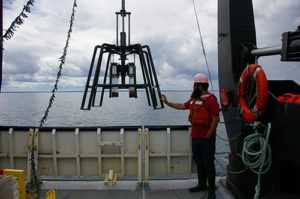
Ryan Lepak aboard the U.S. EPA RV Lake Guardian sampling Great Lakes waters for methylmercury. Contributed photo.
Lepak continued by explaining the transfer of methylmercury up the lower food web, from phytoplankton to herbivorous zooplankton and then to omnivorous zooplankton, was not statistically different. Finally, he and the team tested whether water-mercury concentrations have declined over the study period and determined that without more routine continuous monitoring, trends could not be identified because unresolved sources of variability masked data trends.
“The conditions that make the Great Lakes highly susceptible to methylmercury bioaccumulation are common to the world’s great lakes,” Lepak said. “These global water bodies should serve as excellent sentinels to track the impacts mercury reductions at local, regional and global scales have on biota. This paper’s important finding could aid those planning global mercury monitoring networks aimed at tracking mercury reductions due to actions resulting from the Minamata Convention on Mercury, a multilateral environmental agreement the U.S. signed in 2013 and which would reduce global mercury pollution.”
The post Methylmercury water concentrations low, but Great Lakes fish consumption advisories persist—new research documents one probable culprit first appeared on Wisconsin Sea Grant.
News Releases | Wisconsin Sea Grant
News Releases | Wisconsin Sea Grant
https://www.seagrant.wisc.edu/news/methylmercury-water-concentrations-low-but-great-lakes-fish-consumption-advisories-persist-new-research-documents-one-probable-culprit/?utm_source=rss&utm_medium=rss&utm_campaign=methylmercury-water-concentrations-low-but-great-lakes-fish-consumption-advisories-persist-new-research-documents-one-probable-culprit
Large one-time investments in water infrastructure and environmental protection are included in Michigan’s 2022 budget, which puts millions toward drinking water emergency response, municipal flooding and erosion aid, pollution cleanups and dam repairs. Read the full story by MLive.
Great Lakes Commission
https://www.glc.org/dailynews/20210922-michigan-budget
The bipartisan infrastructure bill, which has already passed the Senate and is expected to be voted on by the House by the end of September, directs dollars to improve water quality not just locally in the Great Lakes but across the Midwest. Read the full story by The Plain Dealer.
Great Lakes Commission
https://www.glc.org/dailynews/20210922-infrastructure
Wisconsin tribal official Daniel Guzman has been appointed to the EPA’s Small Community Advisory Subcommittee, which was established in 1996 to solicit input from community leaders about ideas to improve and protect the health of the people of the environment where they live. Read the full story by the Green Bay Press Gazette.
Great Lakes Commission
https://www.glc.org/dailynews/20210922-tribal-official
The nine catfish species found in the Great Lakes are a surprisingly interesting group of fishes. Read the full story by Great Lakes Now.
Great Lakes Commission
https://www.glc.org/dailynews/20210922-catfish
The Senecaville State Fish Hatchery is one of six fish hatcheries operated by Ohio Department of Natural Resources, Division of Wildlife, that produce more than 40 million fish a year to stock many of Ohio’s waterways. Read the full story by The Daily Jeffersonian.
Great Lakes Commission
https://www.glc.org/dailynews/20210922-hatchery
A proposed solar canopy array in the parking lot will help Presque Isle State Park reach net-zero energy consumption. Read the full story by the Erie Times-News.
Great Lakes Commission
https://www.glc.org/dailynews/20210922-solar-panels
A meeting to discuss coastal resiliency is planned for this week in in a southwest Michigan township. The township has received a grant from the Land Information Access Association to help it update its master plan with coastal resiliency in mind. Read the full story by WSJM – St. Joseph, MI.
Great Lakes Commission
https://www.glc.org/dailynews/20210922-coastal-resiliency
Waves as high as 20 feet could be possible on the Great Lakes and flooding occurring in parts of southeast Michigan as a multi-day storm system settles into the region, according to the National Weather Service. Read the full story by The Detroit News.
Great Lakes Commission
https://www.glc.org/dailynews/20210922-waves-and-flooding
Tens of millions of fish from the Great Lakes are caught annually and most of them meet the same culinary fate becoming fried filets. However, groups and individuals around the region have recently been working on projects aiming to encourage this culinary path and expand the scope of Great Lakes fish and wild game consumption. Read the full story by Great Lakes Now.
Great Lakes Commission
https://www.glc.org/dailynews/20210922-fish-fry
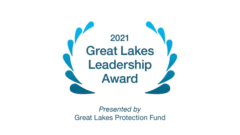
Their daily work aims at reducing microplastics and invasive species in the Great Lakes, increasing attention to equity in the region’s environmentalism, helping communities finance water infrastructure, and better connecting foundations in coastline cities.
For this, six individuals from around the Great Lakes region earned a 2021 leadership award from the Great Lakes Protection Fund.
Great Lakes Now
https://www.greatlakesnow.org/2021/09/great-lakes-protection-fund-award-plastics-invasives-equity/
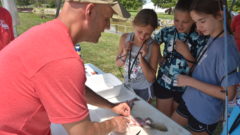
Tens of millions of fish from the Great Lakes are caught and kept every year by recreational anglers, and it’s common knowledge the vast majority of them meet the same culinary fate: filets coated in some type of breading or dipped in batter, and then fried in oil.
Walleye and yellow perch are the two species who suffer this fate the most.
Great Lakes Now
https://www.greatlakesnow.org/2021/09/regionwide-local-fish-game-recipes/
September 21, 2021 – The Great Lakes Protection Fund named Crystal M.C. Davis a recipient of a 2021 Great Lakes Leadership Award in recognition of her efforts to protect the health of the Great Lakes basin and the people who live in the region. She is one of six individuals the Fund is recognizing for their trailblazing efforts on behalf of the Great Lakes.
Davis is reorienting environmentalism in the Great Lakes region to focus on the needs of the people who live there. Her approach focuses on fair and equitable access to the benefits that come with restoring the ecological health of the system – like access to clean drinking water and the removal of toxins from the lakes and surrounding waterways. She currently serves As Vice President of Policy & Strategic Engagement for the Alliance for the Great Lakes.
“Crystal is changing the nature of environmentalism in the Great Lakes region. She serves as a tireless advocate for the those who are disproportionately impacted by environmental challenges,” said David Rankin, executive director of Great Lakes Protection Fund, in announcing the award. “With so much of the work in this region focused on policies like the Water Quality Agreement and the Clean Water Act, she was one of the first to say, ‘What about the people who live here? How will their lives be improved by these policies?’ And for that, she’s a trailblazer.”
Davis’ approach is prompting both environmentalists and policymakers to look at water quality issues throughout the Great Lakes basin in a new way. She spearheaded the development of Shut Up and Listen, which guides those who want to listen to community concerns. Last year, Ohio Governor Mike DeWine appointed her to a three-year term on the Ohio Lake Erie Commission. Additionally, she led the effort to develop the first-ever Ohio Environmental Justice Platform, and also led a study about water affordability in Ohio.
“Thank you to the Great Lakes Protection Fund for this honor and for recognizing that we need to bridge the gap between the grass-tops and grassroots movements,” said Davis. “The power to solve complex water challenges lies at the intersection of authentic community engagement and public policy making.”
Other winners of the 2021 Great Lakes Leadership Award are:
The Great Lakes Protection Fund (the Fund) is the impact investor for the Great Lakes. Over the past three decades, the Fund has turned big ideas turn into big impact by investing $91 million into projects and teams that are pioneering new technologies, practices, and financing strategies to restore and protect the health of the Great Lakes. From improved water quality to sustainably managed forests to fewer invasive species entering the lakes, the Fund launches and accelerates innovations that consistently lead to long-term improvements throughout the region.
This is the third year for the Great Lakes Leadership Award. In 2019, the Fund recognized innovation in water technology that has the potential to vastly improve in the health of the Great Lakes and help secure clean water for the future. The 2020 Great Lakes Leadership Award went to top storytellers in the region. Learn more here.
###
Contact:
Valerie Holford for Great Lakes Protection Fund at valerieholford@starpower.net or 202-365-5336
The post Crystal M.C. Davis Receives 2021 Great Lakes Leadership Award appeared first on Alliance for the Great Lakes.
News – Alliance for the Great Lakes
News – Alliance for the Great Lakes
https://greatlakes.org/2021/09/crystal-m-c-davis-receives-2021-great-lakes-leadership-award/
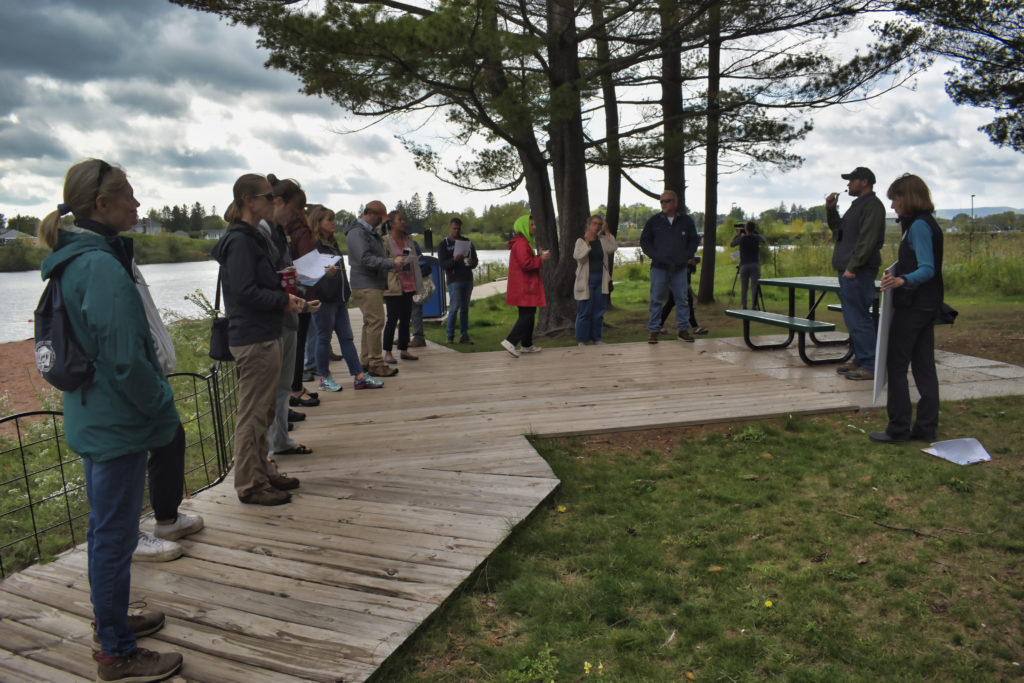
Participants on the tour listen to Matt Steiger, Wisconsin DNR, describe improvements to the Barker’s Island inland beach. Image credit: Marie Zhuikov
Last week, I joined a walking tour to check on the progress of projects designed to improve the environment on Barker’s Island in Superior, Wisconsin. After a welcome at the Lake Superior Estuarium by Jim Paine, the mayor of Superior, we hoofed it over to Barker’s Island beach. Although most of the work on the beach was done back in 2019, progress is still being made.
Native plants that replaced invasive buckthorn bushes were thriving and in fine color. Yellow sunflowers and purple bottle gentians lined the raised boardwalk along with many other grasses, flowers and shrubs. Our tour guides from the Lake Superior National Estuarine Research Reserve (Reserve) and the Wisconsin Department of Natural Resources (DNR) pointed out porous concrete underneath the picnic tables and pervious pavers in the parking areas along the street. These are designed to allow water to soak into the ground instead of running directly into the lake, which diminishes pollution.
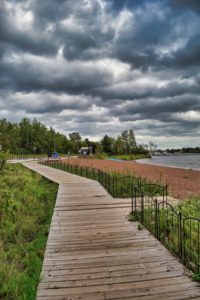
The Barker’s Island beach and boardwalk. Image credit: Marie Zhuikov, Wisconsin Sea Grant
Matt Steiger with the Wisconsin DNR said the changes are working. Before the improvements, the E. coli bacteria amount exceeded standards 42% of the time for the summer season in 2015 and 2016. After the project was completed in 2020, E. coli exceedances dropped to only 8%.
The second area we visited encompassed the charter fishing dock parking lot and the Barker’s Island Inn lot and tennis courts. Funded by a grant to the city of Superior from the National Fish and Wildlife Foundation’s Sustain Our Great Lakes Program, progress on these projects has been slower than anticipated because of the many challenges brought about by the COVID pandemic.
However, city staff expect ground to be broken in the spring of 2022 on medians in the parking lot, which will be planted with native trees and shrubs to slow water runoff. The tennis courts behind the inn will be turned into a green space, and the paved walking path across from the inn will be extended.
Our next stop was Barker’s Island Marina. Manager Eric Thomas showed us the many improvements completed this spring thanks to several grants and cooperation among Sea Grant programs in Wisconsin, Michigan, and Ohio, as well as the City of Superior, the Wisconsin Coastal Management Program, The Ohio State University, and the Wisconsin Marine Association. These include a rubber mat that catches toxic paint chemicals and biofouling organisms when boats are removed from the water and washed at the end of the season.
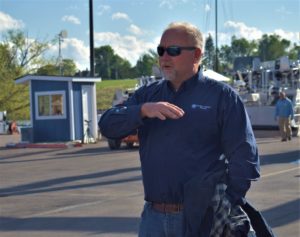
Eric Thomas, manager of Barker’s Island Marina, describes new environmental improvements. Image credit: Marie Zhuikov, Wisconsin Sea Grant
Pavement at the marina has been replaced and regraded so that it drains toward a new engineered wetland along its edge. Todd Breiby with the Wisconsin Coastal Management Program explained that the wetland includes a forebay, which catches the pavement runoff and allows contaminants to settle. Then the water moves into a basin filled with plants, which filter the water, and then into another plant-filled basin, before emptying into the bay.
Breiby and Thomas then walked us closer to the road to the marina parking lot stormwater pond, which was retrofitted to make it function better. The pond used to flood the lot because it had no outlet, so a culvert was added that allows water to drain into the bay once it reaches a certain level. A forebay was also installed, which captures sediment coming off the marina parking lot and improves water quality.
To ensure these new marina improvements are doing their job cleaning water, researchers from Ohio State and the Reserve are monitoring water quality and noting “before” and “after” changes.
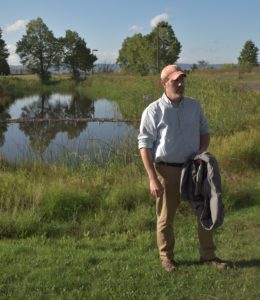
Todd Breiby with the Wisconsin Coastal Management Program describes changes to the Barker’s Island Marina parking lot stormwater pond. Image credit: Marie Zhuikov, Wisconsin Sea Grant
Walking back to my office (which is on Barker’s Island) at the end of the tour, I was struck by how things that look so natural, like the wetland and the pond, can do such a good job of cleaning water if we give them a chance. Although some had only been put in this season, they already looked like they’d been around for years. It’s good to know that these features are in place and working, and that they’ll serve as examples for other communities and marinas to try.
The post Environmental improvements to Barker’s Island progressing first appeared on Wisconsin Sea Grant.Blog | Wisconsin Sea Grant
https://www.seagrant.wisc.edu/blog/environmental-improvements-to-barkers-island-progressing/?utm_source=rss&utm_medium=rss&utm_campaign=environmental-improvements-to-barkers-island-progressing
Michigan’s hemp industry could get up to $100 million in federal funds to help it compete globally under a proposal pushed by a nationwide growers association.
The post Michigan’s growing hemp industry faces roadblocks first appeared on Great Lakes Echo.Great Lakes Echo
http://greatlakesecho.org/2021/09/21/michigans-growing-hemp-industry-faces-roadblocks/
Cook County Board President Toni Preckwinkle was present for a groundbreaking ceremony to kick off a project that will restore more than 100 acres of wetlands by connecting Powderhorn Lake to Wolf Lake in the southeast area of Chicago, Illinois. Read and view the full story by WBBM-TV – Chicago, IL.
Great Lakes Commission
https://www.glc.org/dailynews/20210920-restoration
Minnesota regulators have ordered Enbridge to pay more than $3 million for allegedly violating state environmental law by piercing a groundwater aquifer during construction of the Line 3 oil pipeline. Read the full story by The Associated Press.
Great Lakes Commission
https://www.glc.org/dailynews/20210920-enbridge
According to the Great Lakes Seaway Partnership, the Seaway system handled over 20 million metric tons of cargo from the opening of the Seaway on March 22 through August 31. Read the full story by WWTI-TV – Watertown, NY.
Great Lakes Commission
https://www.glc.org/dailynews/20210920-seaway
Previous research and current study find troubling trends for the freshwater fish of Minnesota and elsewhere, owing in part to the impact of global warming caused by climate change. Read and hear the full story by The Star Tribune.
Great Lakes Commission
https://www.glc.org/dailynews/20210920-fish-trends
The Michigan Department of Environment, Great Lakes, and Energy on Friday appointed a new clean water public advocate. Read the full story by The Detroit News.
Great Lakes Commission
https://www.glc.org/dailynews/20210920-clean-water
A decade ago, a blue-green algae bloom had never been reported on Lake Superior. Now, half a dozen blue-green algae blooms have been reported this summer across Lake Superior, including one that formed recently in Superior. Read and hear the full story by Wisconsin Public Radio.
Great Lakes Commission
https://www.glc.org/dailynews/20210920-algae
A major voice has chimed in regarding the potential placement of wind turbines in Lake Erie. During its September meeting, the New York State Conservation Council went on record as calling for a “permanent moratorium on offshore industrial wind turbine development in any Great Lakes waters.”. Read the full story by the Observer.
Great Lakes Commission
https://www.glc.org/dailynews/20210920-turbines
Most of the Great Lakes continue to have declining water levels from the record-high levels over the past few years. The water level decline of Lake Michigan and Lake Huron has been the most amazing. Read the full story by MLive.
Great Lakes Commission
https://www.glc.org/dailynews/20210920-water-loss